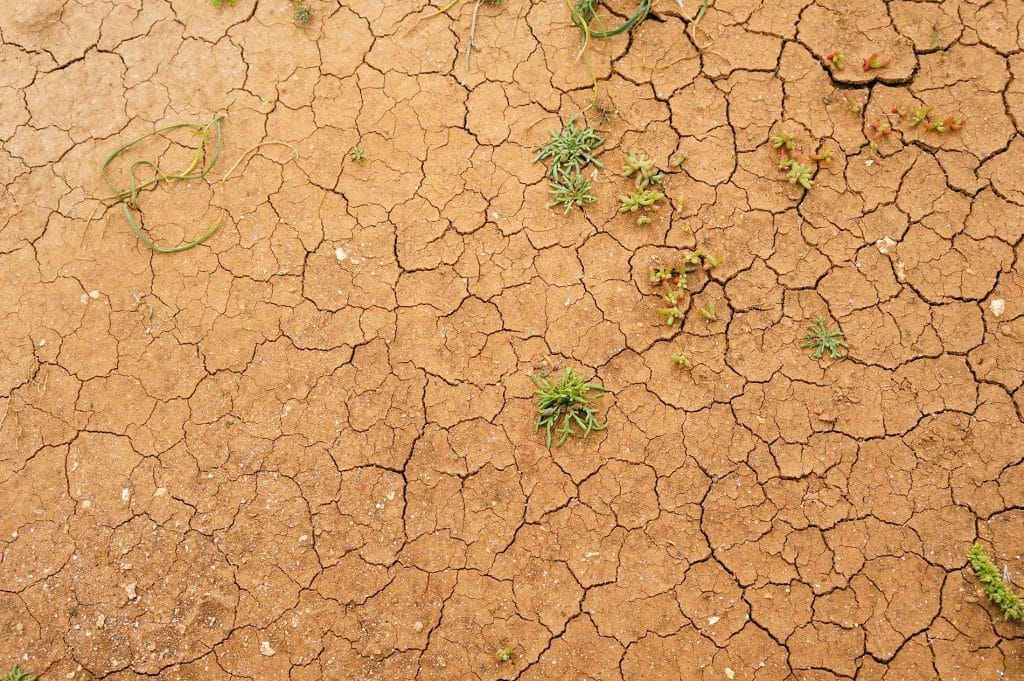 scroll-down
scroll-down

The Effects of Waterlogging on Vertosol (Clay Rich Soil) and Cotton
Vertosol is one of the most common soil types in the Queensland region. The soil ranges from brown to black and tends to crack open when dry and swell when wet.
Vertosol has a high water holding capacity, is very fertile, and can supply crops with nutrients over time.
Initial water infiltration into Vertosol is rapid and fast due to shrinkage and cracks of the soil when dry. However, when the cracks disappear due to wetting, water infiltration becomes extremely slow, and waterlogging can occur.
Waterlogging is the saturation of soil with water. i.e., soil pores, which are the spaces between soil particles, are filled with water. Gases diffuse slowly in solution, and so waterlogging reduces oxygen (O2) concentration while increases Carbon-dioxide (CO2) concentrations in the soil.
Since plant roots need oxygen for respiration, waterlogging consequences for plants may include reduced or ceased growth, death of root apices, and changes in nutrient accumulation (Dodd et al., 2013). In addition, waterlogging increases soil salinity and can cause transient toxicity of soil nutrients that are typically safe when the soil is drained, such as iron, manganese, and even nitrogen.

In cotton crops, the immediate effects of various waterlogging periods on the plant are extreme. Exposure of cotton plants to 3 hour waterlogging results in complete death of terminal apices of roots (Huck, 1970) and impedes energy generation due to the lack of oxygen.
Since the uptake of mineral nutrients depends on energy production in the roots, waterlogging inhibits the uptake of macro-nutrients (N-P-K), especially during peak flowering (McLeod, 2001; Milroy et al., 2009).
Waterlogging affects the vegetative growth and yield of cotton depending on the cumulative time it is subjected to it. Wu et al. (2012) observed a 27–30 % yield reduction after 4–9 days of waterlogging, while ten-day waterlogging caused a 42% yield reduction (Jiang et al., 2013). These yield losses are more significant when waterlogging happens during the early stages (Bange et al., 2004).
Cotton cultivated on Vertosol often experiences waterlogging during furrow irrigation and worse after rain events and warm conditions (Najeeb et al., 2015). The Furrow irrigation method adds a water volume to the soil profile above the soil infiltration rate and also above the tolerance level of cotton to soggy conditions, especially in flat, poorly drained fields.
N-Drip, the world’s first and only large-scale gravity-powered micro-irrigation solution, is a disruptive technology that provides a suitable substitute for flood irrigation. The N-Drip system reduces water volume and flow rate in the field, thus eliminating waterlogging conditions.
Only a small soil volume around the drippers is wetted during and after irrigation events, leaving enough oxygen in the soil. Cotton roots grow towards optimal nutrient uptake areas and oxygen availability, resulting in increased yields, nutrient efficiency, and water savings.
Utilizing more innovative irrigation methods is the need of the hour. Continuous land depletion and degradation causes loss of soil fertility destroys biodiversity, and draws the world further away from the ever-growing global food demands.
To discover the long-term effects of flooding and explore more sustainable, cost-effective methods that will help you maintain the health of your soil, increase productivity and reduce costs, reach out to our experts today.
____________________________________________________________________________________________________
Bange, M. P., Milroy, S. P., & Thongbai, P. (2004). Growth and yield of cotton in response to waterlogging. Field Crops Research, 88(2-3), 129-142.
Dodd, K., Guppy, C. N., Lockwood, P. V., & Rochester, I. J. (2013). Impact of waterlogging on the nutrition of cotton (Gossypium hirsutum L.) produced in sodic soils. Crop and Pasture Science, 64(8), 816-824.
Huck, M. G. (1970). Variation in Taproot Elongation Rate as Influenced by Composition of the Soil Air 1. Agronomy Journal, 62(6), 815-818.
Jiang, Z. H., Zhua, J. Q., Yang, W., Lia, M. F., & Yua, Y. (2013, January). Effects of remedial measures implemented after waterlogging on cotton. In 2013 Third International Conference on Intelligent System Design and Engineering Applications (pp. 692-695). IEEE.
McLeod, I. G. (2001). The effect of waterlogging and ion interactions on the development of premature senescence in irrigated cotton. The University of New England.
Milroy, S. P., Bange, M. P., & Thongbai, P. (2009). Cotton leaf nutrient concentrations in response to waterlogging under field conditions. Field Crops Research, 113(3), 246-255.
Najeeb, U., Bange, M. P., Tan, D. K., & Atwell, B. J. (2015). Consequences of waterlogging in cotton and opportunities for mitigation of yield losses. AoB Plants, 7.
Wu, Q. X., Zhu, J. Q., Liu, K. W., & Chen, L. G. (2012). Effects of fertilization on growth and yield of cotton after surface waterlogging elimination. Advance Journal of Food Science and Technology, 4(6), 398-403.
